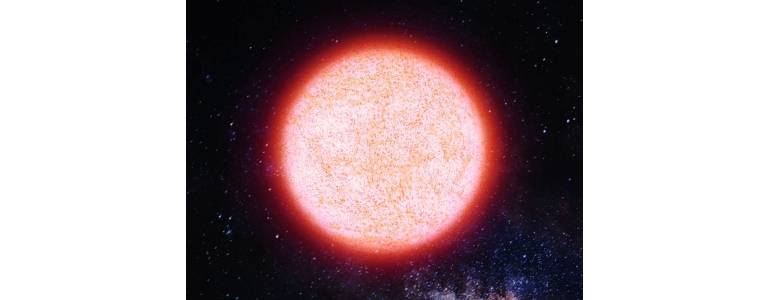Observing the Death of a Red Supergiant in Real Time
They have captured its last 130 days before collapsing into a spectacular type I supernova. This is the first time such an event has been seen by human eyes.

An agony of self-destruction, death and supernova collapse. Such was the dramatic event that, for the first time, a team of astronomers from Northwestern University and the University of California, Berkeley (USA) have witnessed in real time.
This is something that has been long sought after: to observe the last days of a giant star before it explodes.
Red supergiant stars with masses more than eight times that of the Sun have a very cold surface below 3800 °C and huge radii (between 200 and 800 times that of the Sun). They become Type II (or Ib/Ic) supernovae, leaving behind a neutron star or a black hole.Although we have not seen such an event in the Milky Way in the last 400 years, we now see hundreds of such explosions in other galaxies every year.
This discovery challenges previous ideas about how red supergiant stars evolve just before they explode. Previous observations showed that red supergiants remained relatively inactive before their death, with no violent eruptions or luminous emissions. The new observations, however, show just the opposite.
The scientists detected bright radiation from a red supergiant in the last year before exploding, suggesting that at least some of these stars must undergo significant changes in their internal structure, which then lead to the tumultuous ejection of gas moments before collapsing as a supernova.
“This is a major advance in our understanding of what massive stars do moments before they die,” comments Wynn Jacobson-Galán, lead author of the study reported in The Astrophysical Journal. “Direct detection of pre-supernova activity in a red supergiant star has never been observed before in an ordinary type II supernova. For the first time, we saw a red supergiant star explode.”
The team captured the violent event in real time using the low-resolution imaging spectrometer at Keck Observatory in Maunakea, Hawaii that was also used to image the event in real time. They were able to capture the powerful and energetic explosion, which the researchers named supernova 2020tlf (SN 2020tlf).
“We have never confirmed such violent activity in a dying red supergiant star where we see it produce such luminous emission, then collapse and burn, until now,” says the study’s lead author, Raffaella Margutti.
Astronomers hope to detect more events like SN 2020tlf in an attempt to better understand the evolution and eventual demise of stars. In 2019, the red supergiant star Betelgeuse, located within the Milky Way, dimmed to its lowest brightness level in years, leading some astronomers to believe that it may be on the verge of going supernova. However, unlike the star in NGC 5731, Betelgeuse remains intact.
“The detection of more events like SN 2020tlf will have a dramatic impact on the way we define the final months of stellar evolution, uniting observers and theorists in the quest to solve the mystery of stellar evolution.The detection of more events like SN 2020tlf will have a dramatic impact on how we define the final months of stellar evolution, uniting observers and theorists in the quest to solve the mystery of how massive stars spend the final moments of their lives,” says Wynn Jacobson-Galán, co-author of the paper.

